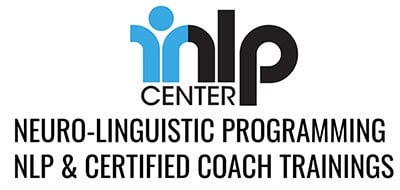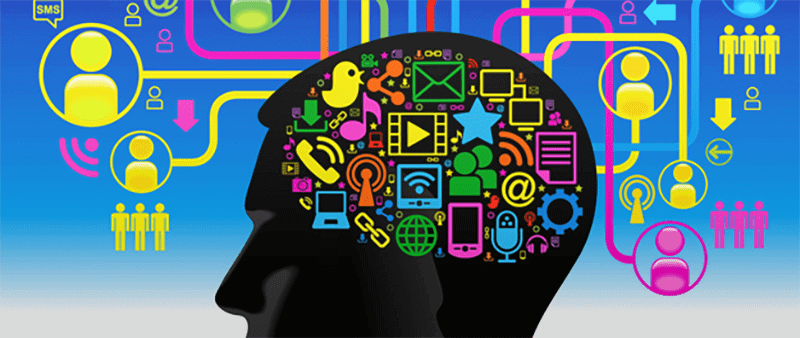Delving into the world of personal development and communication improvement often leads us to a captivating toolset called Neuro-Linguistic Programming (NLP). But what exactly is NLP, and how can it empower you? This comprehensive guide, offered by the International NLP Center, serves as your gateway to understanding this multifaceted approach.
Within this article, you’ll embark on a journey that demystifies NLP’s core principles. You’ll explore its theoretical foundations, discover practical applications for various aspects of your life, and gain insights into the techniques that fuel its effectiveness. Whether you’re seeking to enhance your communication skills, unlock your full potential, or guide others on their path to growth, this guide equips you with the knowledge to harness the power of NLP.
The exploration doesn’t end there. Recognizing the potential benefits of NLP application, the guide delves into considerations for selecting a reputable NLP training program. This information empowers individuals seeking to enhance their own lives or guide others on their journeys of personal growth.
- What Is NLP (Neuro-Linguistic Programming)?
- How Does NLP work?
- The NLP Breakdown of Inner Communication
- The History and Origins of Neuro-linguistic Programming (NLP)
- Popular NLP Techniques
- Neuro-linguistic Programming Training (NLP Training)
- NLP Research and Recognition Project
- Common Questions about NLP
- iNLP Center – The Best Accredited NLP Trainings
What Is NLP (Neuro-Linguistic Programming)?
In a nutshell, NLP is a set of skills that is based on how we experience our outer and inner world through our visual, auditory, and kinesthetic submodalities, resulting in how we make meaning. And, the fact that our thoughts, language, and behaviors are all connected, we can change the way we experience our worlds by changing one or more of these elements. The set of skills NLP provides is taught through models and techniques all intended to provide various outcomes, or goals.
We can also break down the term “Neuro-linguistic programming” by defining what each terms means in relation to the NLP modality:
Neuro: Referring to the mind or brain, particularly regarding how states of mind (and body) affect communication and behavior. NLP teaches a structural way of viewing mind and body states, developing mental maps that show how things happen and how to change course as needed.
Linguistic: Meaning that our mind and body states are revealed in our language and non-verbal communication. Language is the tool we use to gain access to the inner workings of the mind. NLP language patterns teach us how to access unconscious information that would remain vague and unknowable otherwise.
Programming: This refers to the capacity to change our mind and body states. You’ve heard the term living on autopilot, right? To someone trained, this would mean that you are living according to your programming, which consists of habitual thoughts, feelings, reactions, beliefs, and traditions. Someone trained in neuro-linguistic programming knows how such programs are structured in the mind and how to access them through conversation so that outdated programs and autopilot behaviors can be changed.
How Does NLP work?
During conversations, most of us fixate on words. What does this person mean and what shall I say in return? However, it’s been long established that words are the least meaningful aspect of communication, conveying just 7% of meaning (Mehrabian, 1972).
For example, when someone tells you they’re willing to help you organize a social gathering, but their voice is flat and their facial expression looks uninterested… it’s obvious something else is going on. Their words say YES, but their non-verbal communication (93%) says SOMETHING ELSE. How do we understand what they really mean? Neuro-Linguistic Programming (NLP) provides insight into that 93% of communication.
And here’s what’s even more interesting:
Communication is made of so much more than interactions between people. There exists an entire world of communication within your mind and body. Your inner life, which includes your mindset, attitude, and feelings. It is an extremely active form of communication.
[tweet_box design=”box_09″ float=”none” inject=”#NLP”] The most important communication is not between people but within people. [/tweet_box]
Inner communication is a large element of Neuro-Linguistic Programming. It was originally known as the “study of the structure of subjective experience.” Here’s a taste of how it works:
Let’s say you’re having friends over for dinner and you’re feeling extra tense but you’re not sure why. Everything seems fine, but you’re feeling on edge. An NLP Practitioner could figure out how you’re creating this tense state in a few minutes. It’s all about how you’re communicating with yourself on the inside, or Inner Communication.
The NLP Breakdown of Inner Communication
Inner communication is made of images, sounds, and feelings (the VAK Model). Finding out what’s giving you a tense feelings is a matter of discovering which images and sounds go with the tense feeling. As you turn your attention inward, looking for what you see and hear on the inside, you might discover that you are imagining things about the dinner:
• You’re seeing your house all messy as the guests arrive.
• An inner voice says, “They’re going to hate your dinner.”
• Imagining looks of disgust on their faces as they eat.
• You see yourself sitting alone because no one showed up.
The point is: You probably weren’t consciously aware of all the inner communication channels. If you’re feeling tense about dinner, you’re probably imagining how badly it could go and responding to this unconscious imagery and sound. The tense feelings are a mirror of the other channels.
No wonder you’re tense! You are simply responding to your inner communication, whether or not you’re aware of it. But, once you become aware of how you are creating a mindset you don’t want, you can change it. The tense is the “Stuck State” and the way you would rather feel, maybe excited, is the “Desired State”. Neuro-Linguistic Programming offers a vast library of methods to change our stuck state to our desired state, once we identify them. Transforming the inner communication so that you feel better is the Programming component of NLP.
The History and Origins of Neuro-linguistic Programming (NLP)
Who Created NLP?
Although Jon Grinder and Richard Bandler often receive most of the credit for originating Neuro-Linguistic Programming, NLP was actually founded by a group of people who made consistent contributions. This group includes Grinder and Bandler as well as Frank Pucelik, Robert Dilts, Judith Delozier, Leslie Cameron, David Gordon, and others.
At the University of California, Santa Cruz in early 1970s this enlightened group set out to discover the specific communication patterns that enabled outstanding psychotherapists – including Milton Erickson (famous psychiatrist/hypnotherapist), Virginia Satir (founder of Family Systems Therapy), and Fritz Perls (founder of Gestalt Therapy) to achieve uncommon results with their clients.
By direct observation and videotape analyses, they were able to break down these practitioners’ effective patterns of communication and teach them to others.
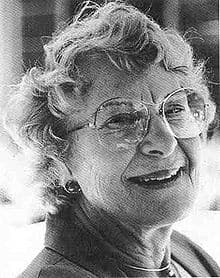
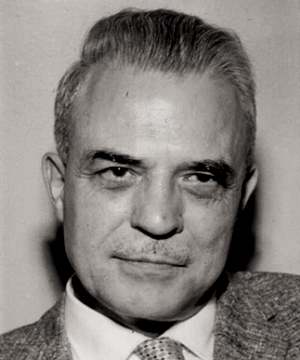
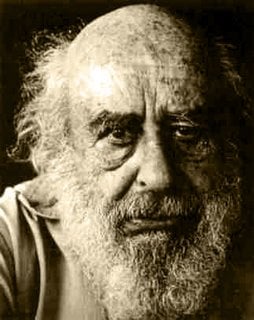
The process used to discover the magic in transformative communication was called modeling. Many consider modeling to be the heart and soul of Neuro-Linguistic Programming. When you know how to create models based on the expertise of others, you can learn and teach any new skill in its essential form.

Popular NLP Techniques
NLP Predicates
Their first discovery was that Satir matched her predicates (verbs, adverbs, and adjectives) to those of her clients without being aware of doing so. Some clients would mainly use visual predicates, while others used auditory or kinesthetic predicates. This led to the proposition that for any person, one of the senses (seeing, hearing, or feeling) is more highly valued and is reflected in the words that he or she selects.
When Satir matched her words with the predicates her clients used, the clients appreciated that Satir understood them. This created rapport, which made her interventions more acceptable.
NLP Eye Accessing Cues
Next, Grinder and Bandler discovered eye accessing cues which are movements of the eyes, may indicate whether one is using pictures, words and sounds, or feelings when thinking, remembering or learning, shown in the graphic below.
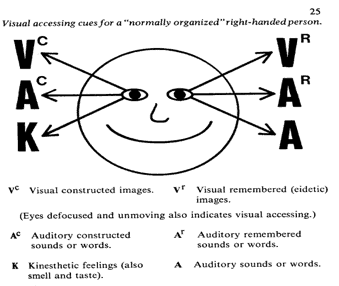
For instance, when a person looks up towards the left, he is probably remembering visual images. You might want to know this so you better understand how they are experiencing their thoughts to build better rapport when coaching them. If they are remembering visual images this means they are accessing their memories visually and visual is their preferred representational system.
NLP Language Patterns
Subsequently, Grinder and Bandler, after studying Milton Erickson, refined the linguistic patterns used by therapists to effectively influence people’s behaviors. This is where the NLP Milton Model comes from – Milton Erickson’s vague language patterns. By using the Milton Model’s vague language, the practitioner allows their participant to create their own meaning. When you intentionally leave out specific information the receiver fills in their own meaning. Here’s an example:
Telling someone, “You look great!”
The receiver will fill in the reason they think they look great and might say, “Thanks! I just got a haircut.” or “This is a new blouse.”
The response provides hidden information about what’s important to them.
Milton Erickson is also the father of hypnosis, which also uses his language patterns. Using vague language patterns in hypnosis allow the participant’s subconscious to fill in the missing information, often at a much deeper level.
The Four Pillars (foundations) of the neuro-linguistic programming:
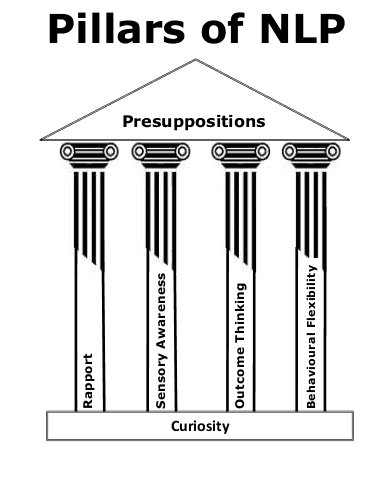
Rapport
Rapport can be described as connecting quickly with others. Creating rapport creates trust from others. Rapport can be built quickly through understanding modality preferences, eye accessing cues and predicates.
Sensory Awareness
Sometimes when you walk into someone’s home, you notice that the colors, smells, and sounds are subtly quite different from yours. Neuro-linguistic programming enables you to notice that your world is much richer when you deliberately pay attention to your senses wholly.
Outcome Thinking
An outcome is your goal for doing something. Outcome connects to thinking about what you want, as opposed to getting stuck in a negative mode of thinking. The principles of outcome approach may help to make the best decisions and choices.
Behavioral Flexibility
Behavioral flexibility means being able to do something differently if the way you’re currently doing it isn’t working. Being flexible is a key aspect of practicing NLP. Learning NLP helps you to find fresh perspectives and to build these habits into your repertoire.
Neuro-linguistic Programming Training (NLP Training)
Steve and Connie Rae Andreas, who worked along side with the originators of NLP, were responsible for organizing the various NLP models and techniques of that time into actual trainings. The main reasons a person may take an NLP training are to:
- Be a powerful and inspiring communicator
- Be skilled at reading non-verbal cues
- Increase your subconscious and sensory awareness
- Master and be in control of your thinking and emotions
- Alleviate fears and phobias
- Motivate and empower
- Develop depth in personal and business relationships
- Attain success and achievement
- Rectify unwanted behaviors in yourself and others
- Effectively communicate and get information from others
Levels of NLP Training
There are many organizations that oversee, organize, and often accredit NLP training centers. All organizations essentially agree to the following designations of NLP training. However, this does not mean that one can move from training center to training center, hoping to acquire the next level of training. Often training centers have their courses build on their previous course content. Therefore, it is best to either commit to taking all your training at one center or checking with the training centers prior to starting your journey.
- NLP Practitioner
- NLP Master Practitioner
- NLP Trainer
- NLP Life Coach or NLP Coach

NLP Practitioner
NLP Practitioner is the first level of NLP training. There is no requirement of NLP experience and anyone can enroll. This beginner level of training encompasses learning the foundational NLP models and popular transformation techniques. A quality NLP practitioner course should involve real-life applications using NLP tools.
You can expect to learn a multitude of techniques which provide solutions to common challenges as well as the ability to apply these techniques to your own life.
This is not a coach training. You are only learning the techniques. So, unless you have other coach training completed, you will simply use these technique as stand-alone solutions.
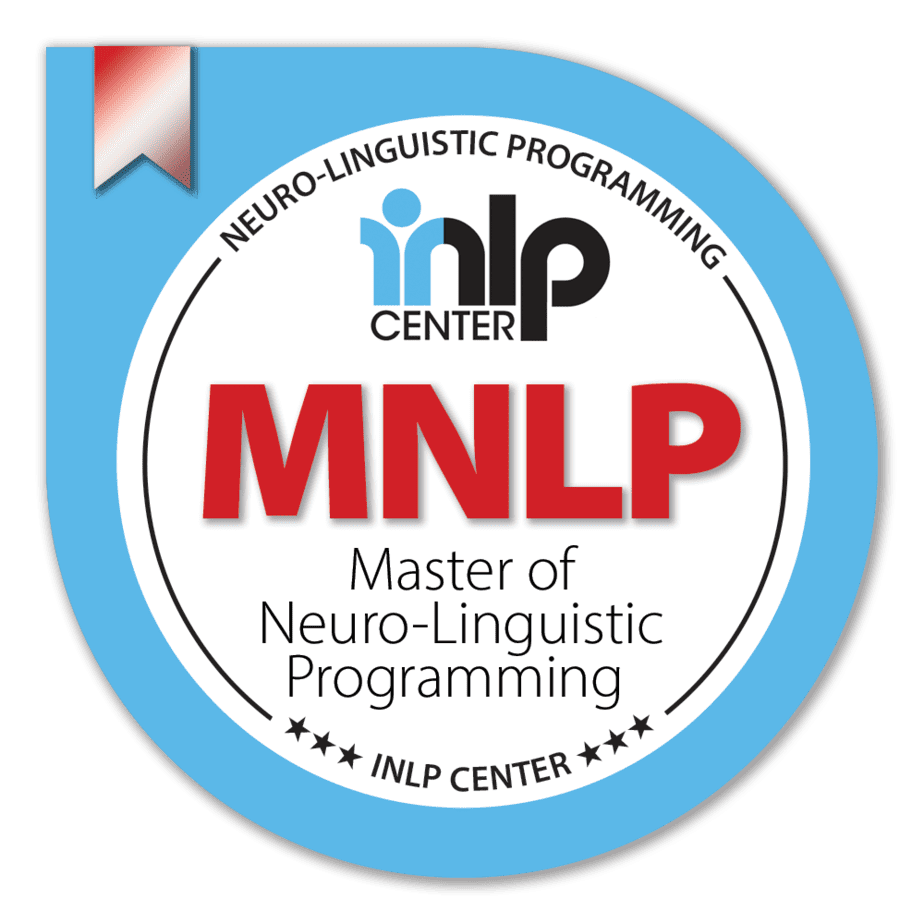
NLP Master Practitioner
An NLP Master training builds on the Practitioner level material in more depth or adds more complex techniques and models. Some of the key areas addressed include modeling and language. In this level, you’ll develop skills to change beliefs and values, as well as more information gathering models.
An NLP Master training usually covers developments in communication techniques. These may include quantum linguistics, discovery and retraining of the unconscious behavioral competence, and why people think differently and how they do it, which is our individual values. Training may also cover filters to our personality – Meta Programs, which are advanced strategies, advanced NLP submodalities, mediation skills, and also advanced linguistic negotiation.
NLP Trainer
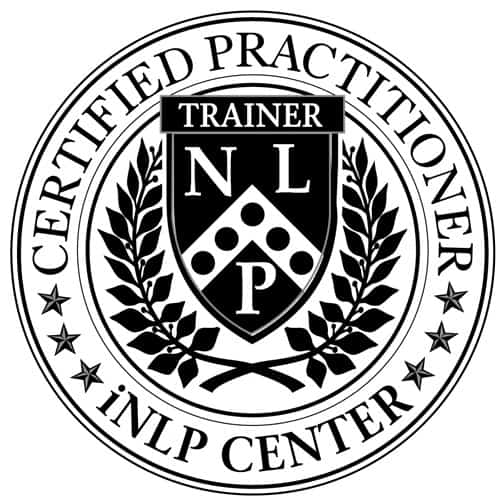
NLP Trainers train Practitioners and Master Practitioners. An NLP Trainer’s Training program teaches you how to teach others NLP using the training center’s material. It usually involves a licensing agreement and hefty fee because you will be starting your own training business.
Or, like iNLP Center, our Trainer’s Training is only for our in-house trainers where they learn how to present and lead the daily live sessions.

NLP Life Coach
An NLP coach is proficient in not only NLP but also Life Coaching. They use the NLP tools throughout their coaching sessions to guide the client through the stages of a coaching session- Pretalk, Information Gathering, Transformation, and Integration.
An NLP Coach might have learned coaching and then added on the NLP Practitioner and NLP Master Tools to their credential. Or, a coach may have taken a complete NLP-Integrated Life Coach Training.
A confident NLP Coach can will be able to flow between multiple technique and models, utilizing specific ones as needed throughout a coaching sessions.

NLP Research and Recognition Project
The NLP Research and Recognition Project, founded by clinical psychologist Frank Bourke, PhD, is a not-for-profit organization created to expand the clinical investigation into Neuro-Linguistic Programming.
Bourke received his doctorate in clinical psychology at the Institute of Psychiatry in London and has been using NLP clinically since the early 1970’s.
After the 9-11 attacks in 2001, Dr. Bourke designed and implemented a rehabilitation plan for 800 World Trade Center building survivors. He discovered that he was able to alter the symptoms of PTSD (trauma) with an NLP-derived protocol more quickly and effectively than with other protocols.
As a result of this experience, Bourke founded the NLP Research and Recognition project “to advance the science of Neuro-Linguistic Programming and bring the research up to a scientific standard necessary for more widespread implementation.”
A common question among those seeking training in Neuro-Linguistic Programming is, “Is there any research to back NLP?” The answer is a resounding yes. The results NLP practitioners have experienced for decades are now being codified into clinical research.
Common Questions about NLP
What is NLP?
NLP is a set of models that create greater self-awareness of a person’s inner and outer experience. This awareness allows the person to move from their stuck state to a more resourceful state, to achieve their goals. NLP is short for Neuro-Linguistic Programming. NLP holds a vast library of tools and techniques that one can access to solve any problem they may face. This flexibility is what makes NLP the most suitable training for coaches in any niche or everyday people trying to move forward in their lives.
What is NLP used for?
NLP is used to assist yourself and clients to become more effective communicators, problem solvers, and goal achievers. By practicing NLP you are able to see the world from a new perspective which allows you to become more flexible and resourceful in the way you approach any obstacle.
Is NLP Magic?
No. NLP is not magic. NLP models allow you to retrain the way you approach problem states to move towards more resourceful states. Some people call it magic because it is so effective. But, but like any other change, you must still apply it regularly to your life.
Can anyone learn NLP?
Yes, anyone can learn NLP. Here, at iNLP Center, we have students or all ages and continents learning and benefiting from the NLP tools they’ve learned.
iNLP Center – The Best Accredited NLP Trainings
iNLP Center offers a comprehensive NLP Practitioner, Master Practitioner, NLP Life Coach, and Executive training that will prepare a student for work as a coach, trainer, or to simply enhance a current career. All NLP trainings at iNLP Center are accredited by the International NLP Association (INA) and the International Coaching Federation (ICF). iNLP Center is only NLP coach training that is accredited by ICF as a Level 1 and 2 training.



